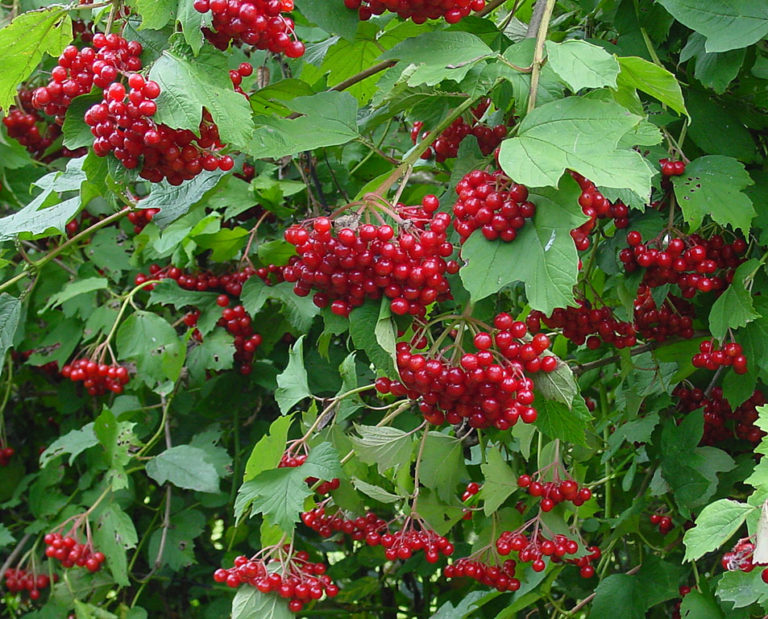This plant is not currently for sale. This is an archive page preserved for informational use.
Cranberrybush Viburnum or Highbush Cranberry is a dense, arching, deciduous shrub six to ten feet (or even taller) native all across Canada and our northern states down as far as a couple of counties in West Virginia and Kentucky (not native in NC). In spring, there are beautiful, showy lace-cap flowers 3-4 inches across.The opposite, maple-like, three-lobed leaves turn wonderful shades of purple, orange and red in autumn. But the plant gets its common name from the berries, which are very similar to cranberries (true cranberries are in the genus Vaccinium) in being red and edible but sour. These bright, clear red berries (drupes), which occur in large numbers in Sept/Oct., can be made into a high-vitamin sauce. Both the flowers and the berries of Cranberrybush Viburnum are important to wildlife. Though densely branched, this shrub does not form thickets by spreading, and is not fussy about soils. According to the Natural Resources Conservation Service, the Highbush Cranberry is listed as ‘endangered’ in Indiana, ‘threatened’ in Ohio, and ‘rare’ in Pennsylvania. There is also a European Viburnum opulus which is considered invasive in some states which has inedible, bitter fruit.

